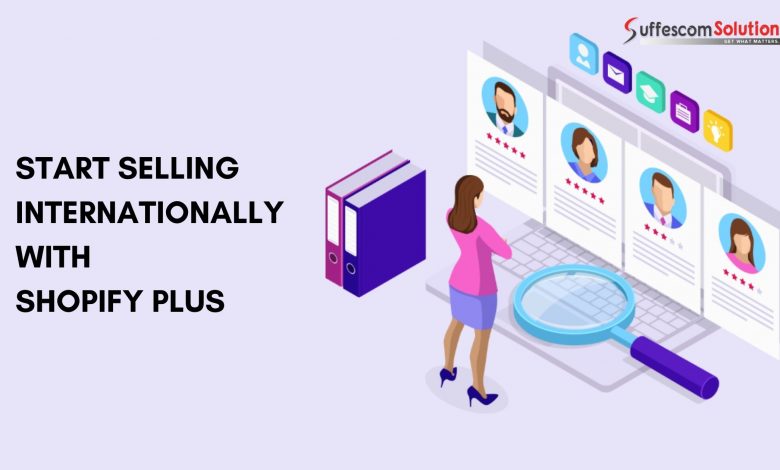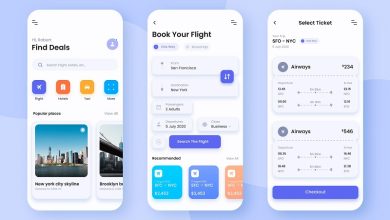How to Get Started Selling Internationally with Shopify Plus

People worldwide are more connected than ever before, and the international ecommerce market is no different. It has become significantly easier for shoppers to purchase products from stores worldwide, all thanks to platforms like Shopify Plus. In fact, according to a recent Shopify survey, non-U.S. shoppers account for 35% of total traffic. Are you also interested in selling internationally? Selling internationally with Shopify Plus is easy and reliable. Worrying about how to do it? Don’t worry we have your back.
International ecommerce provides a huge opportunity for online retailers to grow their brands and increase conversions. However, you may feel overwhelmed when it comes to getting started on your own. For example, 92 percent of international shoppers prefer to browse and buy in their own currency — and that’s just one example of the enormous effort that goes into capturing a piece of the international ecommerce pie.
It’s a good thing we’re here to guide you through the world of Shopify Plus’s localization, international shipping, and currency toggles with a map. Let’s get started!
Choose Your International Target Markets
Global expansion is a noble goal, but it isn’t always feasible yet. Though there are advantages to attracting as many customers as possible, each international market has its buying habits, necessitating customized advertising and localization strategies.
Intentional expansion is one of the simplest ways to make the international ecommerce process more manageable. Look at your Shopify Plus analytics dashboard to see where your international customers are coming from. Examine the data to see if any patterns emerge. Is there demand from particular countries or regions? What products do they want to buy? Reduce your target markets to one or two countries using this information.
Offer Local Currency Options
Nobody enjoys mentally performing complex mathematical calculations (especially when factoring in things like tax rates). Thankfully, Shopify Plus (and its integrations, such as Avalara AvaTax) are here to relieve the stress.
Make the shopping experience more enjoyable and comfortable for international customers by offering different currency options with the help of Shopify Plus.
- Go to the Shopify Payments section of your account.
- Select “Add a new country/region” from the drop-down menu.
- Choose the countries you want to work with.
Your store will automatically detect where customers are coming from with Shopify Plus — no additional apps are required! Now that everything is in place, international customers will see product prices in their currency.
You have the option of manually setting conversion rates or having it convert automatically based on a live foreign exchange rate.
Manage International Shipping
Shipping is one of those things that you either love or hate. Even the most seasoned ecommerce entrepreneur may experience nervousness when it comes to international shipping. Here we have shared our best tried and tested tips for completing the process with minimal stress:
International shipping is usually more expensive than domestic shipping. First, see if your regular shipping carriers provide international shipping to your target countries, as well as the prices and options available. If it’s too much, don’t worry: Shopify Plus can help you with fulfillment (at very low rates!) as well.
For international buyers, include accurate shipping rates and times in the checkout process. Again, it’s preferable to set expectations in advance by being open and honest.
Check to see if your target countries have any additional shipping taxes (the UK, for example, has a somewhat complicated “collect and remit” VAT requirement.) You don’t want your packages to be held up at customs.
Localize Your Online Store
Offering local pricing is a significant first step toward providing a targeted experience for international shoppers. Still, it’s only the beginning — for example, how will shoppers understand your site if they don’t speak English?
Localization should be at the top of your international ecommerce priority list. We’ve broken it down into simple steps for you:
- Provide international domains with default language and pricing. You can further customize the shopping experience by providing different domains that target different countries with appropriate messaging, marketing, and SEO. To create subdomains, we recommend Shopify Plus.
- Translate the contents of your store. According to studies, up to 75% of shoppers will not consider purchasing from a website that does not offer their preferred language — that’s a huge number! That said if you’re familiar with the languages of your target countries and willing to take on the challenge of translating the content yourself, great! If not, take a look at these Shopify translation apps, which will automatically translate your store into the language of your choice. In the Shopify Experts Marketplace, you can also hire a translator. Make a note: Prioritize your homepage, product pages, and other high-traffic content over translating everything at once (an overwhelming prospect!).
- Shopify Plus allows you to translate your store’s content into up to 20 languages, whereas the regular Shopify platform only supports five. That’s a significant number of new markets.
Get Creative With Marketing
The major challenge now is international ecommerce marketing. You can translate and distribute your ads to new markets, but it will be ineffective. You don’t want to waste money on the finishing touches after trying to localize your store for international customers.
Keep the following guidelines in mind:
Check to see if your ads are directing customers to the correct subdomain.
If you have a significant international shipping deal that is cheap and fast, mention it in your ad creative.
Copy and images should be localized. Consider partnering with a local Shopify expert if you’re unfamiliar with your target country to avoid making any mistakes.
Make sure that prices in dynamic ads are displayed in the correct currency.
Summing Up
International ecommerce presents Shopify brands with a vast opportunity, but we’re not going to sugarcoat it: it’s a giant beast to conquer. Ecommerce retailers must remain quick, nimble, and creative in the face of constant changes in global supply chains, shopper preferences, and ad platform best practices.
With the help of Shopify Plus Development Company, you’ll be able to take your business all over the world in no time.





